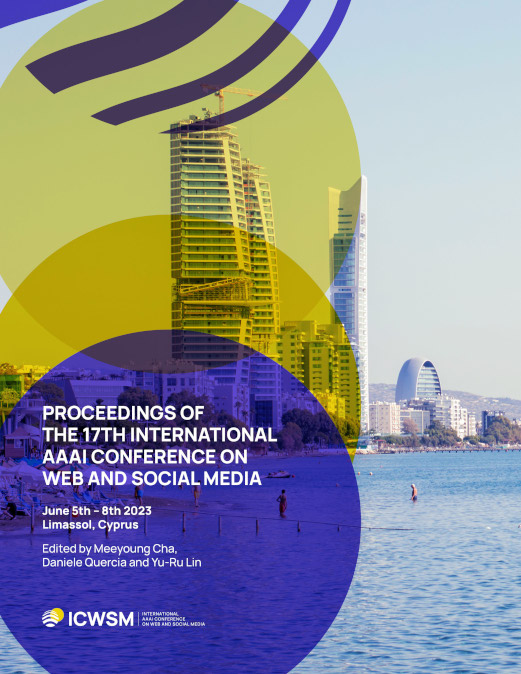The Geometry of Misinformation: Embedding Twitter Networks of Users Who Spread Fake News in Geometrical Opinion Spaces
DOI:
https://doi.org/10.1609/icwsm.v17i1.22183Keywords:
Web and Social Media, Qualitative and quantitative studies of social media, Credibility of online contentAbstract
To understand why internet users spread fake news online, many studies have focused on individual drivers, such as cognitive skills, media literacy, or demographics. Recent findings have also shown the role of complex socio-political dynamics, highlighting that political polarization and ideologies are closely linked to a propensity to participate in the dissemination of fake news. Most of the existing empirical studies have focused on the US example by exploiting the self-reported or solicited positioning of users on a dichotomous scale opposing liberals with conservatives. Yet, left-right polarization alone is insufficient to study socio-political dynamics when considering non binary and multi-dimensional party systems, in which relevant ideological stances must be characterized in additional dimensions, relating for example to opposition to elites, government, political parties or mainstream media. In this article we leverage ideological embeddings of Twitter networks in France in multi-dimensional opinions spaces, where dimensions stand for attitudes towards different issues, and we trace the positions of users who shared articles that were rated as misinformation by fact-checkers. In multi-dimensional settings, and in contrast with the US, opinion dimensions capturing attitudes towards elites are more predictive of whether a user shares misinformation. Most users sharing misinformation hold salient anti-elite sentiments and, among them, more so those with radical left- and right-leaning stances. Our results reinforce the importance of enriching one-dimensional left-right analyses, showing that other ideological dimensions, such as anti-elite sentiment, are critical when characterizing users who spread fake news. This lends support to emerging accounts of social drivers of misinformation through political polarization, but also stresses the role of the entanglement between fake news, anti-elite polarization, and the role of scientific authorities in public debate.Downloads
Published
2023-06-02
How to Cite
Ramaciotti Morales, P., Berriche, M., & Cointet, J.-P. (2023). The Geometry of Misinformation: Embedding Twitter Networks of Users Who Spread Fake News in Geometrical Opinion Spaces. Proceedings of the International AAAI Conference on Web and Social Media, 17(1), 730-741. https://doi.org/10.1609/icwsm.v17i1.22183
Issue
Section
Full Papers

